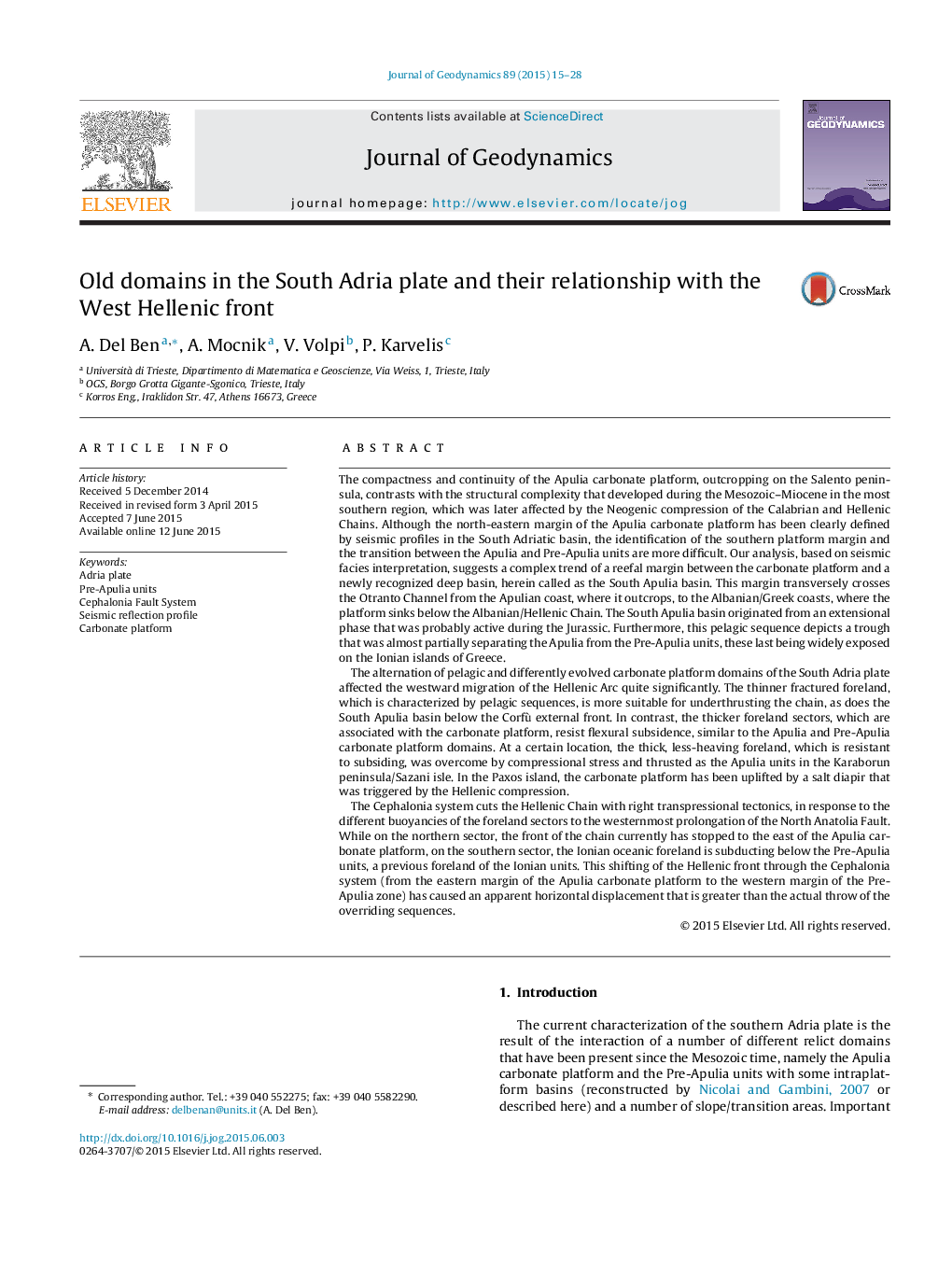| کد مقاله | کد نشریه | سال انتشار | مقاله انگلیسی | نسخه تمام متن |
|---|---|---|---|---|
| 4688018 | 1635760 | 2015 | 14 صفحه PDF | دانلود رایگان |

• A basin developed between Apulia and Pre-Apulia carbonate platforms in the Jurassic time.
• The migration of the Albanian/Hellenic Chain is hardly affected by the complex foreland structures.
• The Cephalonia Fault System separates thrusting of different domains.
The compactness and continuity of the Apulia carbonate platform, outcropping on the Salento peninsula, contrasts with the structural complexity that developed during the Mesozoic–Miocene in the most southern region, which was later affected by the Neogenic compression of the Calabrian and Hellenic Chains. Although the north-eastern margin of the Apulia carbonate platform has been clearly defined by seismic profiles in the South Adriatic basin, the identification of the southern platform margin and the transition between the Apulia and Pre-Apulia units are more difficult. Our analysis, based on seismic facies interpretation, suggests a complex trend of a reefal margin between the carbonate platform and a newly recognized deep basin, herein called as the South Apulia basin. This margin transversely crosses the Otranto Channel from the Apulian coast, where it outcrops, to the Albanian/Greek coasts, where the platform sinks below the Albanian/Hellenic Chain. The South Apulia basin originated from an extensional phase that was probably active during the Jurassic. Furthermore, this pelagic sequence depicts a trough that was almost partially separating the Apulia from the Pre-Apulia units, these last being widely exposed on the Ionian islands of Greece.The alternation of pelagic and differently evolved carbonate platform domains of the South Adria plate affected the westward migration of the Hellenic Arc quite significantly. The thinner fractured foreland, which is characterized by pelagic sequences, is more suitable for underthrusting the chain, as does the South Apulia basin below the Corfù external front. In contrast, the thicker foreland sectors, which are associated with the carbonate platform, resist flexural subsidence, similar to the Apulia and Pre-Apulia carbonate platform domains. At a certain location, the thick, less-heaving foreland, which is resistant to subsiding, was overcome by compressional stress and thrusted as the Apulia units in the Karaborun peninsula/Sazani isle. In the Paxos island, the carbonate platform has been uplifted by a salt diapir that was triggered by the Hellenic compression.The Cephalonia system cuts the Hellenic Chain with right transpressional tectonics, in response to the different buoyancies of the foreland sectors to the westernmost prolongation of the North Anatolia Fault. While on the northern sector, the front of the chain currently has stopped to the east of the Apulia carbonate platform, on the southern sector, the Ionian oceanic foreland is subducting below the Pre-Apulia units, a previous foreland of the Ionian units. This shifting of the Hellenic front through the Cephalonia system (from the eastern margin of the Apulia carbonate platform to the western margin of the Pre-Apulia zone) has caused an apparent horizontal displacement that is greater than the actual throw of the overriding sequences.
Journal: Journal of Geodynamics - Volume 89, September 2015, Pages 15–28